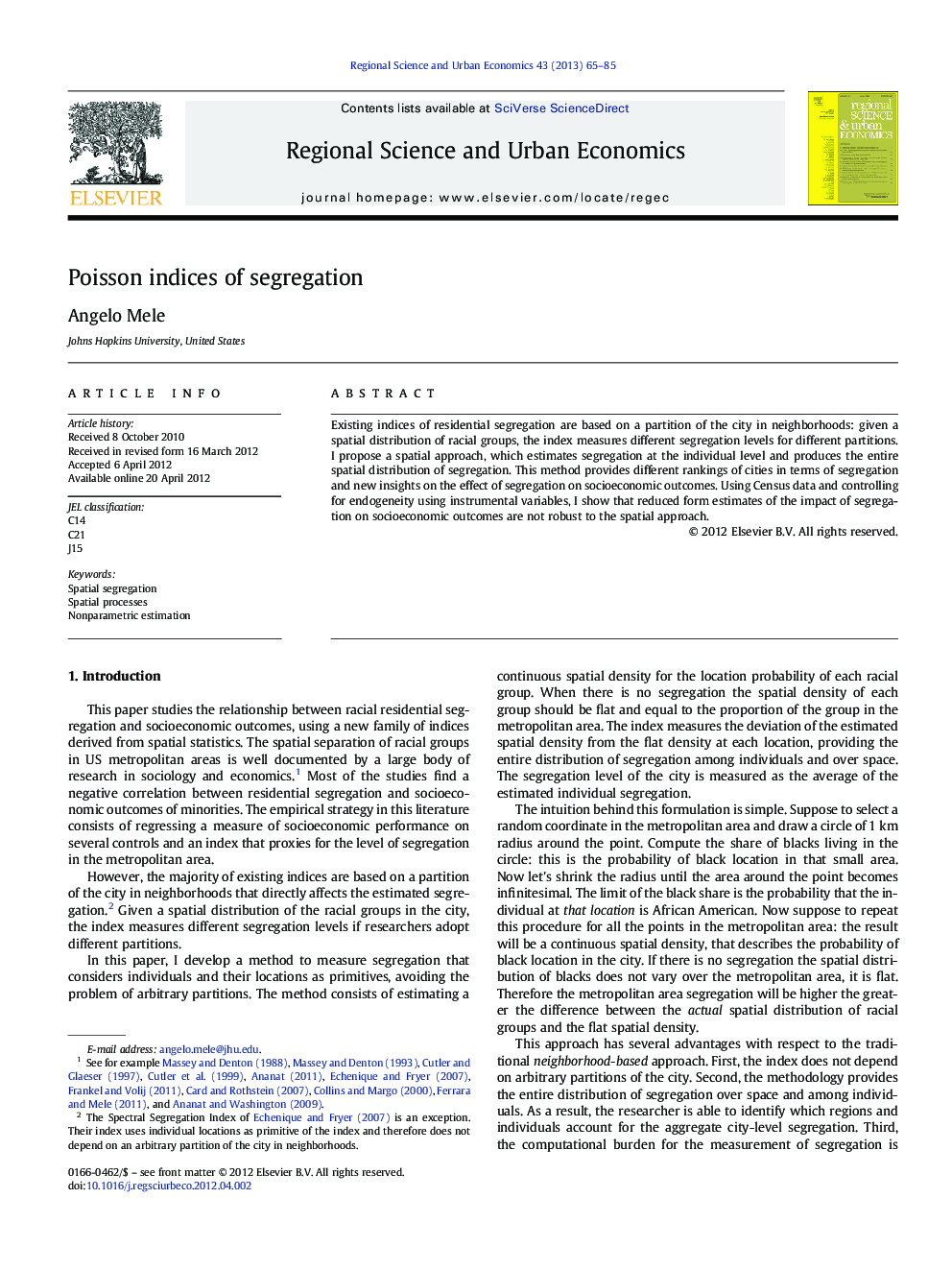| Article ID | Journal | Published Year | Pages | File Type |
|---|---|---|---|---|
| 983994 | Regional Science and Urban Economics | 2013 | 21 Pages |
Existing indices of residential segregation are based on a partition of the city in neighborhoods: given a spatial distribution of racial groups, the index measures different segregation levels for different partitions. I propose a spatial approach, which estimates segregation at the individual level and produces the entire spatial distribution of segregation. This method provides different rankings of cities in terms of segregation and new insights on the effect of segregation on socioeconomic outcomes. Using Census data and controlling for endogeneity using instrumental variables, I show that reduced form estimates of the impact of segregation on socioeconomic outcomes are not robust to the spatial approach.
► I propose methods for estimating spatial segregation, based on individual locations. ► Estimated segregation does not rely on a partition of the city in neighborhoods. ► I provide simple and computationally efficient nonparametric methods of estimation. ► The method can be used also when exact location data are not available. ► The economic impact of segregation disappears when using the spatial approach.
